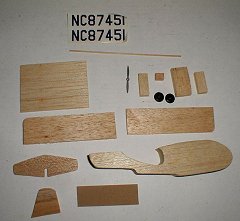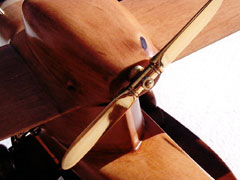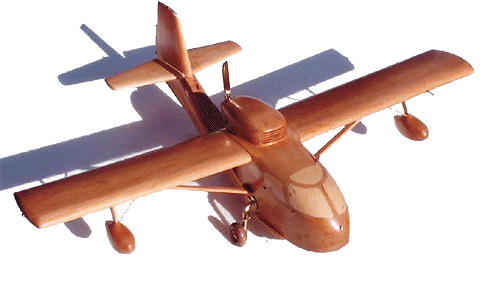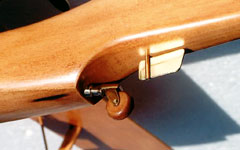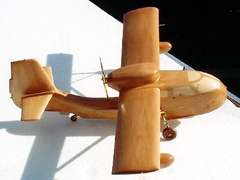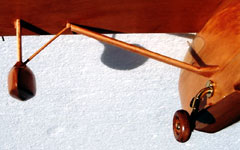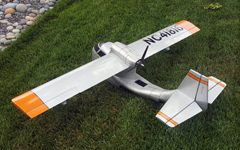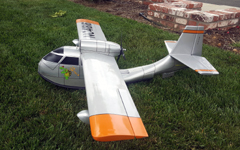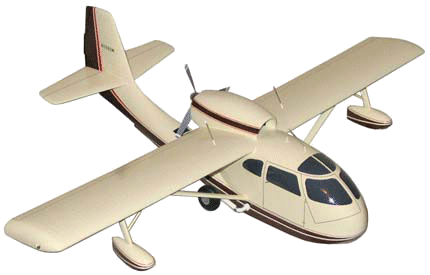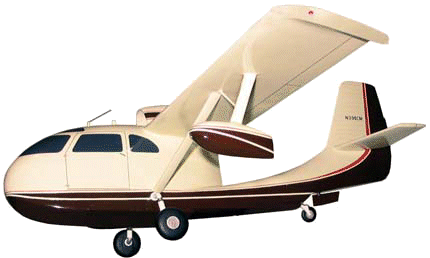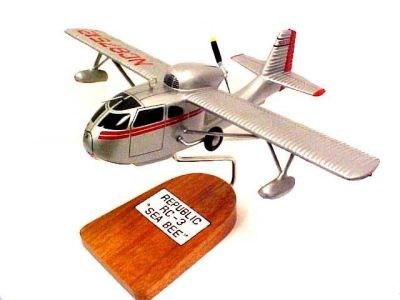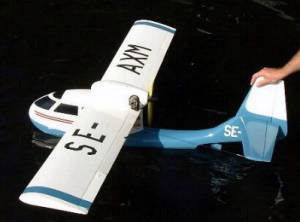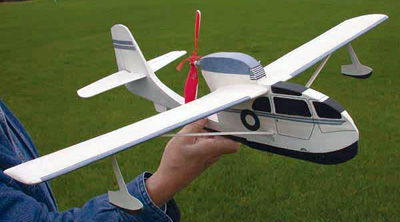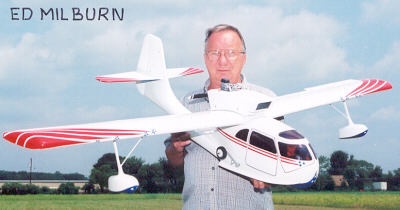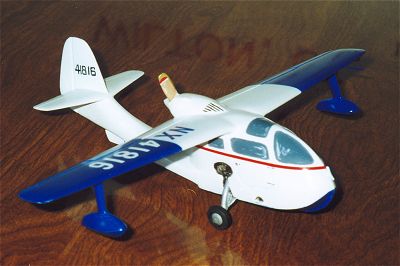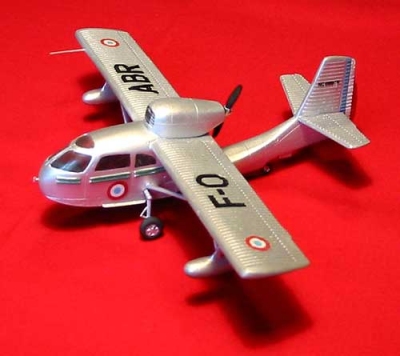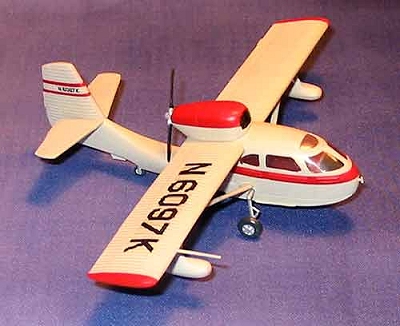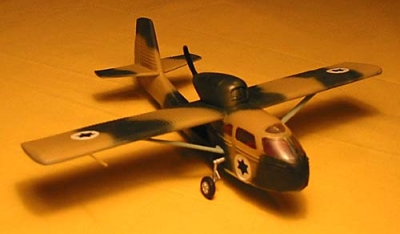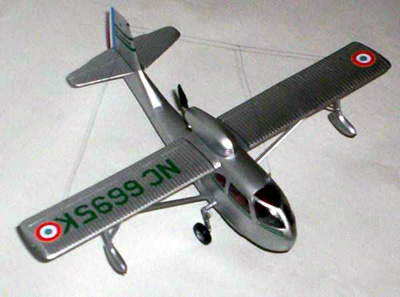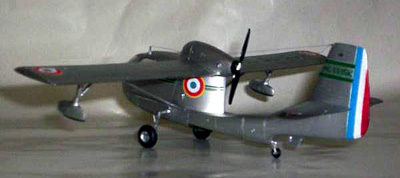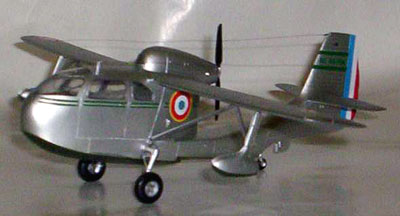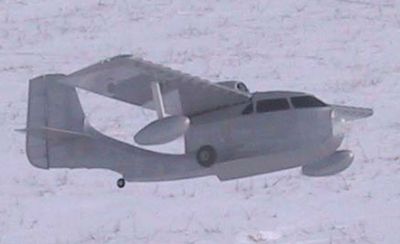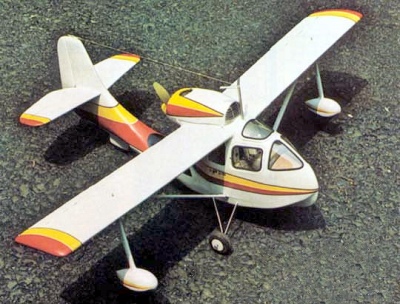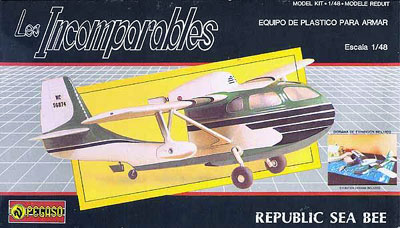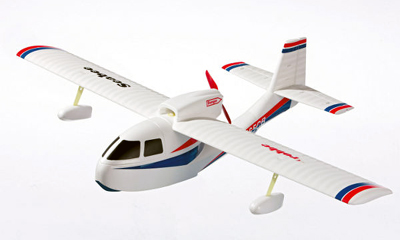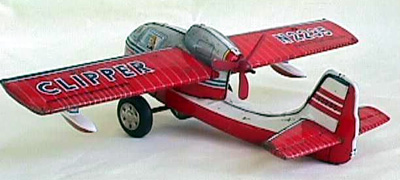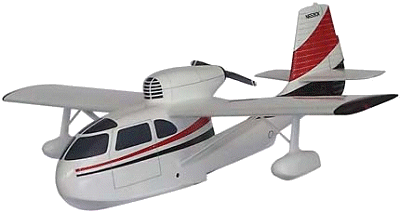Seabee R/C Model by Christer Bergström, Sweden.
|
|||||||||||||||||||||||||||||||||||||||||||||||||||||||||||||||||||||||||||||||||||||||||||||||||||||||||||||||||||||||||||||||||||||||||||||||||||||||||
|
|
Cleveland Seabee Kit |
|
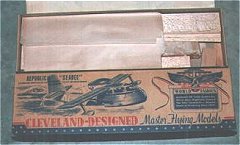
|
Cleveland |
|
Eko Seabee Kit |
|
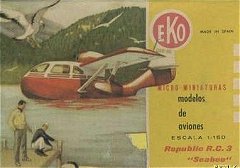
|
EKO |
| The
EKO is a mini-scale polystyrene model kit of the Seabee, with
transparent windows. The finish and accuracy
of the model is quite poor. The model kit was probably
manufactured in the 1960ies.
|
|
| G&P Seabee/Twin Bee R/C Model Kit | |
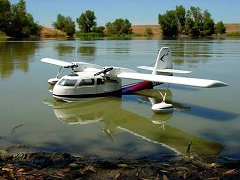
|
G and P
Sales 72" |
|
The G&P Seabee is a R/C scale model featuring a fiberglass fuselage composed of fiberglass mat. The wings are precut out of small bead foam and are designed to be sheeted with 1/16" balsa. The rudder, horizontal stab and elevators are presawn from light weight balsa. The fuel tank is mounted ahead of the engine inside the fiberglass nacelle. The engine cowl and wing floats are also fiberglass. The floats come with all the hardware necessary to mount them. Included in the kit is a clear vacuum formed bubble for the windows. Functional wing lift struts eliminate the necessity of a spar in the wing, allowing a stressed skin design that makes building fast and easy. This airplane is a very gentle trainer-like plane to fly due to the constant cord high lift airfoil. The Seabee takes off in about 100 ft of water with a .40 engine. The Twin Bee takes off more quickly. The kit includes full size plans, window bubble, a fiberglass fuselage, 2 piece wing foam cores, lift struts, control horns, hinges, screws and bolts, and all necessary wood. The wing mounts, engine firewall, and tank well reinforcements are also included and are presawn. The plans show how to make retractable gear for true amphibian operation. The Twin Bee wing is a separate wing and can be purchased also, so it can be flown as a twin or a single engine plane.
|
|
| Glencoe Seabee Kit | |
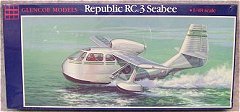
|
Glencoe
Models |
| The Glencoe Models Seabee plastic kit is made of
transparant polystyrene, 23 parts. The molds are the same as for
the original Olin Seabee kit. Decals for G-AJNM/AJVO/AJVP, N87xxx,
Israeli AF '61'. Box art by John Amendola. Quite rude
finish.
|
|
| Hawk Seabee Kit | |

|
Hawk |
|
This is a balsa wood model kit. It looks like it is a model kit similar to the Minicrafters kit, but with metal and plastic parts. More information wanted!
|
|
|
Lindberg Seabee Kit |
|

|
Lindberg
Products |
| The Lindberg Seabee plastic kit is made of grey
polystyrene, 27 parts. The molds are the same as for the original
Olin Seabee kit and the later Glencoe kit. Decals for NC56874. Box
art by Ray Gaedke. Good quality and finish.
|
|
|
Mach Seabee Kit |
|
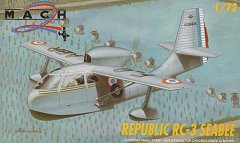
|
Mach 2 |
| The March 2 Seabee plastic kit is made of cream
polystyrene, approximately 40 parts. Decals for N6097K, F-OABR,
Israeli AF '61'. Box art by Alaxandre. Poor finish.
|
|
| Minicrafters Seabee Kit | |

|
Minicrafters
of Baltimore |
|
The Minicrafters of Baltimore 'Solid Models' Republic Seabee is a prefabricated balsa scale display model, consisting of 10+ wood/balsa parts. The kit includes a scale drawing and templates for the carving and sanding of the model. The model is to be painted.
|
|
| Olin Seabee Kit | |

|
Olin |
| The Olin Seabee plastic kit is made of polysterene.
Original molds for the Lindberg and Glencoe kits. More information
wanted!
|
|
| Pegaso Seabee Kit | |
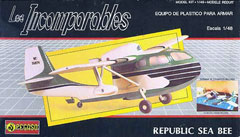
|
Pegaso |
| The Pegaso Seabee plastic kit is made of
polysterene. Probably made from the Olin/Lindberg molds. The
Pegaso model includes a diorama set. More information wanted!
|
|
| Robbe Seabee RC Model | |
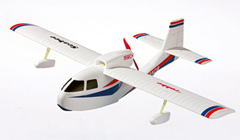
|
Robbe
Modellsport |
The Robbe "Seabee" is a handy sized
seaplane, moulded in light and strong ""Flexit plus" foam
in CNC machined moulds (all made in Germany). The model is capable
of water take-off as well as being hand launched. In just a few
metres, the model gets "on the step" and takes off safely and
reliably from water. The pusher prop gives excellent
maneuverability on water. It is able to take off and land on very
small lakes and rivers, therefore, the Seabee is a "cute"
plane for the whole family on holiday. Also the Seabee can be
easily hand launched. Due to the low landing speed, the landing
can be made on every small grass field. For this, the floats are
easily removable. Unlike the original, the small Seabee can fly
simple aerobatics, such as loops, rolls and stall-turns. The Robbe
Seabee is a fun-flyer for the experienced model flyer. Thanks to
modern construction of light foam, it is light, pretty and unsinkable.
|
|
| Kenn Anderson's Seabee | |
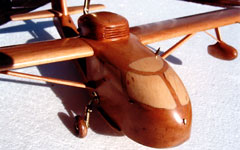
|
|
| Kenneth E. Anderson of Lake In The Hills,
Illinois, built this fantastic scratch built Republic Seabee model from
Paul Matt's plans. 74 years old, Kenn built all from scratch
except the main wheels which were modified to fit on the Seabee.
Using carbon paper, card board and the Matt plans, Kenn made 61
templates. Kenn continues; The pontoons are cherry wood, the wings
base 'linden' wood, the tail parts poplar. The body, I do not know.
My wife had bought the wood 25 years ago, but an interesting
coincidence; all three dimensions were within 1/16". The
brass parts are made from 5/16" and 3/16" round stock plus
.025 flat stock.
Tools used: Drill press, bench grinder, belt sander laid on its side, hand tools and lots of sandpaper. The wings and tail assembly are dolled for strength. Other parts are inset 3/16". The finish is "Minwax" stain and satin varnish rubbed with 0000 steel wool. The brass parts are lacquered. The effort that required the most thought was the sequence of events. The last part shaped was the keel. Then assembly, of course. Plastic wood or filler were not used. The degrees of offset of the tail assembly were ignored for symmetry, but the 2 degree of wing dehedral are correct. 2 degrees of the propeller; 'close'. Three of the four tie downs are of wood, the nose one of brass. The trim tab of the wing would not stay glued, thus no tab. The wheels retract. I had outlined the doors with a fine permanent marker, but I felt it detracted so I removed them with alcohol. I did, however, use brass handles. [Kenn Anderson - 14 October 2004]
|
|
| Bryant Seabee RC Model | |
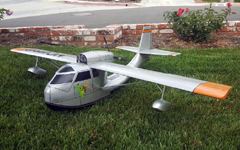
|
|
|
Seabee Model Photos |
|
|
|
|
|
|
|
|
|
|
|
|
|
|
|
|
|
|
|
|
|
|
|
|
|
|
|
|
|
|
|
|
|
|
|
|
|
|
|
|
|
|
|
|
|
|
|
|
|
|
|
|
|
|
|
|
|
|
|
Home | Museum | Literature | Memorabilia | Models | Movies | Promotion |
||
| Updated: 2019-02-27 |
© 2004-2019 Steinar Saevdal |
|

